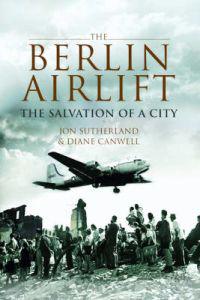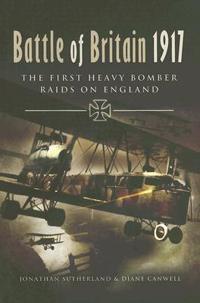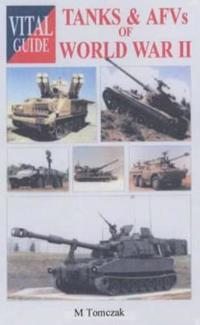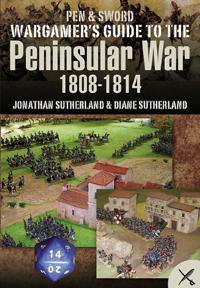Berlin Airlift (Inbunden)
avJonathan Sutherland, Diane Canwell, Jonathan Sutherland
ISBN: 9781589805507 - UTGIVEN: 2008-02At the end of World War II, the German capital city of Berlin was divided into four zones controlled by America, Great Britain, France, and Russia.In June 1948, in an attempt to drive the Allied forces out of Berlin, Stalin stopped all road and rail traffic in and out if the city, whilst simultaneou[...]
Battle of Britain 1917 (Inbunden)
avJonathan Sutherland, Diane Canwell, Jonathan Sutherland
ISBN: 9781844153459 - UTGIVEN: 2006-08In the autumn of 1916 the Germans began to equip with the Gotha twin-engined bomber. Of a pusher layout, these aircraft could fly at 15,000 feet, well above any contemporary fighter's maximum height. With a range of 800 km (500 miles) and a bomb load of up to 500 kg (1,100 lb), the Gothas were desig[...]
Blitzkrieg Russia (Pocket)
avJonathan Sutherland, Diane Canwell, Jonathan Sutherland
ISBN: 9781848843349 - UTGIVEN: 2011-07The photographs are taken from five unpublished albums focussing on the German invasion of Russia in 1941 - Operation Barbarossa. Two of the albums contain shots taken by German infantrymen and include shots of combat, vehicles, knocked-out tanks and prisoners of war. Two of the other albums featur[...]
Container Ships and Oil Tankers (Inbunden)
avJonathan Sutherland, Diane Canwell
ISBN: 9780836883770 - UTGIVEN: 200709Key Concepts in Business Practice (Pocket)
avJonathan Sutherland, Diane Canwell
ISBN: 9781403915313 - UTGIVEN: 2004-03-15Key Concepts in International Business (Pocket)
avDiane Canwell, Jonathan Sutherland
ISBN: 9781403915344 - UTGIVEN: 2004-03-15Aqa Gcse Business And Communication Systems Revision Guide (Pocket)
avJonathan Sutherland, Diane Canwell
ISBN: 9781444107753 - UTGIVEN: 2010-02-26The complete revision guide for the new specifications to help you prepare for your exams
World War 2 Tanks and Afvs -vital G (Pocket)
avJonathan Sutherland
ISBN: 9781840373813 - UTGIVEN: 2002-12The British invention of the tank during World War I revolutionized land warfare. Twenty years later, tanks and other armoured fighting vehicles (AFVs) played a key role in the major theatres of World War II. The German Tiger, the American Sherman and the British Churchill are all names that have be[...]
Wargamer's Scenarios (Pocket)
avJonathan Sutherland
ISBN: 9781844159475 - UTGIVEN: 2014-09The enjoyment of wargaming is greatly enhanced if the battles (games) are played within well thought-out scenarios. Instead of simply lining up evenly-matched armies and fighting to the death, the players can have realistic objectives (such as the capture of a vital piece of terrain or delaying a su[...]
Key Concepts In Leadership (Pocket)
avJonathan Gosling, Ian Sutherland, Stephanie Jones
ISBN: 9781849205894 - UTGIVEN: 2012-08-16Introducing, explaining and contextualizing current leadership conceptsthis book cross-references each of the entries to provide a clear definition, an explanation of historical usage and lay out practical issues and examples from the contemporary world. Suggestions for further reading sit alongside[...]












